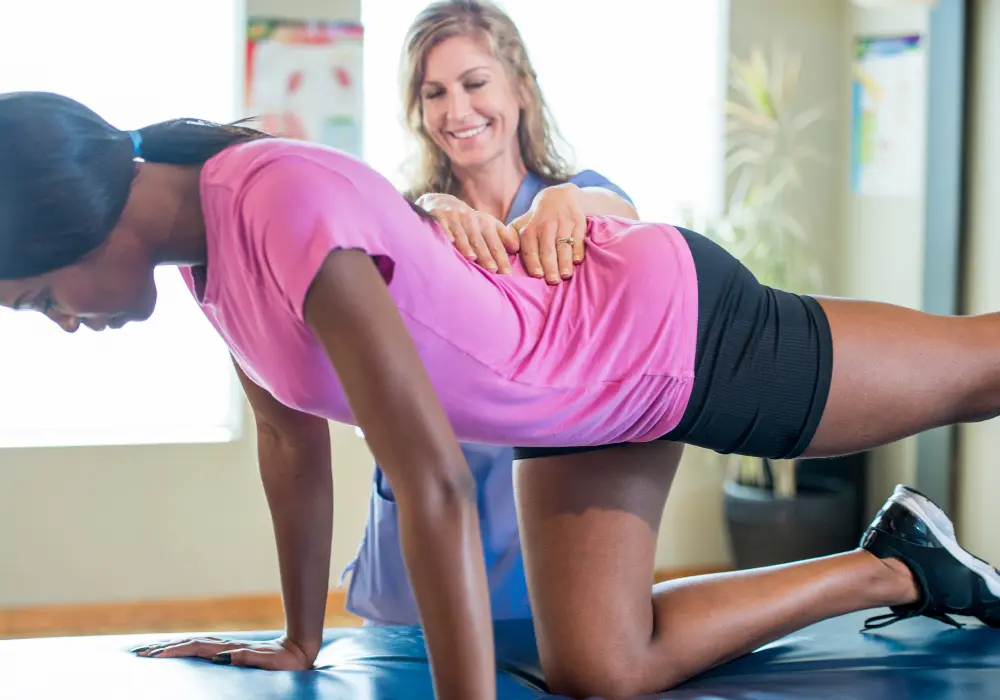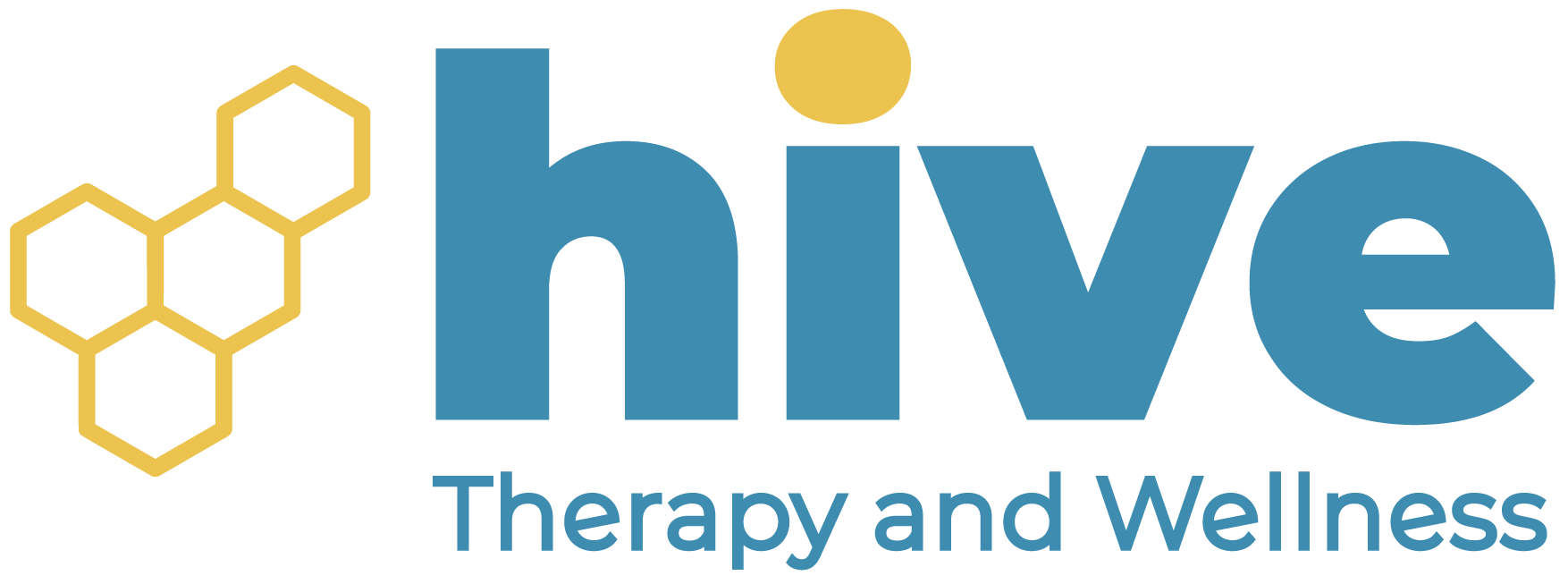Neuromuscular Re-Education
Neuromuscular Re-Education
Empowering Movement, Restoring Freedom
Schedule a FREE Discovery Call!
Restoring movement, muscle function, and coordination through exercises and stretches.
What Is Neuromuscular Re-Education?
This treatment targets the patient’s neuromotor pathways, the communication between their brain and muscles. This retraining strategy can focus on the activation or inhibition of a single muscle or group of muscles during various movements.
Neuromuscular re-education helps improve coordination and engagement of muscles during movements to prevent stress, strain, or injury—while also promoting energy conservation and efficiency.

Neuromuscular re-education involves training to improve the balance, coordination, awareness, posture, and strength of a patient’s muscles and tissues. While performing a specific movement with your body may seem like a simple task, it may be necessary to retrain the brain to use the correct muscles more efficiently. When they are not used correctly even for simple movements, the muscles can be strained or overused, resulting in pain and possibly injury. Your balance, posture, and activation of specific muscles all contribute to a movement being performed properly. While it may seem like a muscle issue, neuromuscular re-education has a larger focus on the nervous system, which is what tells the body when and how to move!
While a physical therapist could physically assist or constantly cue their patients to complete a task or movement with proper form, it is more effective to implement methods that will help the patient learn proper activation patterns without constant external assistance. This allows patients to be better equipped with the necessary tools to make adjustments to activities, movements, and postures throughout their day, thus minimizing the chance of re-injury.
The purpose of neuromuscular re-education is to train the patient how to better move through space by focusing on the coordination and activation of the muscles. This is completed by focusing not just on muscle strength and flexibility, but on how the patient perceives their body within the environment and then chooses to move. When retraining the motor patterns, the therapist is addressing how the brain sends and receives signals from the muscles and joints through a vast network of nerve pathways. Neuromuscular re-education can be achieved by using various tools inside and outside of therapy sessions, including but not limited to: mirrors, cups, balls, bands, foam pads, walls, your provider’s hands, biofeedback units, and more.
Who Can Benefit From Neuromuscular Re-Education?
Neuromuscular re-education is suitable for any patient receiving physical therapy. At Hive Therapy and Wellness, we always strive to provide our patients with research-based, comprehensive care. Involving neuromuscular re-education into many of our patients’ care plans ensures that they are benefiting from well-rounded physical therapy treatment that encapsulates all of their needs; therefore ensuring better outcomes and an improved quality of life.
In other words, this treatment is suitable for any condition that involves the nervous and musculoskeletal systems—essentially every condition you can imagine seeing a physical therapist for. Some examples of how physical therapists may utilize this treatment can include:
- Rehabilitation after injury or surgery
- Patients who have experienced an injury or surgery will need neuromuscular re-education to retrain their mind and body connection as it relates to the involved areas, and to be able to perform movements correctly and efficiently. This will not only help patients be in better control of their bodies, but also prevent further complications during their recovery.
- Targeting pain or weakness in muscles
- When you are in pain, muscles are often inhibited or turned off as a protective mechanism. Unfortunately, over time this leads to compensation, which results in more weakness and imbalance. Incorporating neuromuscular re-education allows for improved activation of muscles which decreases pain and improves strength.
- Rehabilitation from chronic medical or neurological conditions
- Various medical and neurological conditions naturally worsen over time, causing movement imbalances and increased fall risks. Engaging in a program that counteracts these worsening conditions helps patients slow the decline and maintain, or in some instances, improve, their condition.
- To alleviate pain, balance, or stability issues
- This treatment can help build core stability, balance, posture, and proprioceptive awareness. Proprioception refers to the patient’s ability to sense their body’s movement, location, and actions in space without having to consciously think about it. Neuromuscular re-education treatments positively challenge these systems in a controlled environment with feedback from their therapist, which helps the patient to react better when faced with obstacles in their daily life.
- Improve athletic performance
- Neuromuscular re-education is utilized in sports performance training to allow athletes to use their bodies more efficiently and effectively, resulting in increased speed, power, and coordination during their sporting activities.
The overall goal of this treatment is to provide patients with an improved quality of life. This treatment strategy is not limited to situations that involve recovery from surgery. Learning to activate the muscles correctly, use proper form throughout the day, and coordinate tasks that seem difficult will help expedite your therapy plan of care. This treatment will also help minimize the likelihood of future injuries and strain. Because of its wide range of benefits, most patients can expect to have neuromuscular re-education incorporated into their comprehensive care plan.
What to Expect From Neuromuscular Re-Education
This treatment is non-invasive and well within the comfort level of most patients. There are a variety of neuromuscular re-education methods to use, so a physical therapist will work with their patient to identify the interventions that meet their individual needs. Depending on the patient’s condition and health goals, the methods of this treatment may differ.
Oftentimes, the patient may not even realize neuromuscular re-education is being performed. For example, simply watching yourself move in the mirror and changing your posture to ensure you are utilizing proper form and technique is a form of neuromuscular re-education. During a therapy session, the provider will give consistent feedback while teaching the patient how to feel and engage appropriately—as well as modify their movements in real time. The training process may utilize a variety of tools depending on the patient’s unique situation.
Regardless of the task used for this treatment, the aim is to activate or inhibit specific muscles during an action. The feedback given during practice can be given in a few different ways, such as the therapist tapping or applying pressure on specific muscles, utilizing verbal cues, or using a monitor or mirror that the patient can see during their activity.
Therefore, neuromuscular re-education is usually completed using tactile, verbal, or visual cuing. Patients can expect these activities to be utilized in their treatment either separately or simultaneously in order to work on their overall coordination. This will help patients feel confident in their training and allow them to make modifications in future sessions as needed.
Some other treatments or activities that may be involved with neuromuscular re-education include:
- Balance and stability exercises
- Proprioceptive training
- Strengthening exercises
- Coordination activities
- Posture retraining
- Biofeedback
- Neuromuscular electrical stimulation (NMES)
- Gait training
- Therapeutic exercises
- Muscle retraining (contraction and relaxation)
While your treatment may not include all of the examples listed above, your care plan will include activities that suit your personal needs and condition. Your physical therapist will always be sure to work you through your treatment by thoroughly explaining the benefits and purpose of the process. Rest assured that they will know how to best incorporate neuromuscular re-education into your care plan, so that you will be able to get the most out of your physical therapy experience.
This treatment targets the patient’s neuromotor pathways, the communication between their brain and muscles. This retraining strategy can focus on the activation or inhibition of a single muscle or group of muscles during various movements. Neuromuscular re-education helps improve coordination and engagement of muscles during movements to prevent stress, strain, or injury—while also promoting energy conservation and efficiency.
Neuromuscular re-education involves training to improve the balance, coordination, awareness, posture, and strength of a patient’s muscles and tissues. While performing a specific movement with your body may seem like a simple task, it may be necessary to retrain the brain to use the correct muscles more efficiently.
When they are not used correctly even for simple movements, the muscles can be strained or overused, resulting in pain and possibly injury. Your balance, posture, and activation of specific muscles all contribute to a movement being performed properly. While it may seem like a muscle issue, neuromuscular re-education has a larger focus on the nervous system, which is what tells the body when and how to move!
While a physical therapist could physically assist or constantly cue their patients to complete a task or movement with proper form, it is more effective to implement methods that will help the patient learn proper activation patterns without constant external assistance. This allows patients to be better equipped with the necessary tools to make adjustments to activities, movements, and postures throughout their day, thus minimizing the chance of re-injury.
The purpose of neuromuscular re-education is to train the patient how to better move through space by focusing on the coordination and activation of the muscles. This is completed by focusing not just on muscle strength and flexibility, but on how the patient perceives their body within the environment and then chooses to move.
When retraining the motor patterns, the therapist is addressing how the brain sends and receives signals from the muscles and joints through a vast network of nerve pathways. Neuromuscular re-education can be achieved by using various tools inside and outside of therapy sessions, including but not limited to: mirrors, cups, balls, bands, foam pads, walls, your provider’s hands, biofeedback units, and more.
Neuromuscular re-education is suitable for any patient receiving physical therapy. At Hive Therapy and Wellness, we always strive to provide our patients with research-based, comprehensive care. Involving neuromuscular re-education into many of our patients’ care plans ensures that they are benefiting from well-rounded physical therapy treatment that encapsulates all of their needs; therefore ensuring better outcomes and an improved quality of life.
In other words, this treatment is suitable for any condition that involves the nervous and musculoskeletal systems—essentially every condition you can imagine seeing a physical therapist for. Some examples of how physical therapists may utilize this treatment can include:
- Rehabilitation after injury or surgery
- Patients who have experienced an injury or surgery will need neuromuscular re-education to retrain their mind and body connection as it relates to the involved areas, and to be able to perform movements correctly and efficiently. This will not only help patients be in better control of their bodies, but also prevent further complications during their recovery.
- Targeting pain or weakness in muscles
- When you are in pain, muscles are often inhibited or turned off as a protective mechanism. Unfortunately, over time this leads to compensation, which results in more weakness and imbalance. Incorporating neuromuscular re-education allows for improved activation of muscles which decreases pain and improves strength.
- Rehabilitation from chronic medical or neurological conditions
- Various medical and neurological conditions naturally worsen over time, causing movement imbalances and increased fall risks. Engaging in a program that counteracts these worsening conditions helps patients slow the decline and maintain, or in some instances, improve, their condition.
- To alleviate pain, balance, or stability issues
- This treatment can help build core stability, balance, posture, and proprioceptive awareness. Proprioception refers to the patient’s ability to sense their body’s movement, location, and actions in space without having to consciously think about it. Neuromuscular re-education treatments positively challenge these systems in a controlled environment with feedback from their therapist, which helps the patient to react better when faced with obstacles in their daily life.
- Improve athletic performance
- Neuromuscular re-education is utilized in sports performance training to allow athletes to use their bodies more efficiently and effectively, resulting in increased speed, power, and coordination during their sporting activities.
The overall goal of this treatment is to provide patients with an improved quality of life. This treatment strategy is not limited to situations that involve recovery from surgery. Learning to activate the muscles correctly, use proper form throughout the day, and coordinate tasks that seem difficult will help expedite your therapy plan of care.
This treatment will also help minimize the likelihood of future injuries and strain. Because of its wide range of benefits, most patients can expect to have neuromuscular re-education incorporated into their comprehensive care plan.
This treatment is non-invasive and well within the comfort level of most patients. There are a variety of neuromuscular re-education methods to use, so a physical therapist will work with their patient to identify the interventions that meet their individual needs. Depending on the patient’s condition and health goals, the methods of this treatment may differ.
Oftentimes, the patient may not even realize neuromuscular re-education is being performed. For example, simply watching yourself move in the mirror and changing your posture to ensure you are utilizing proper form and technique is a form of neuromuscular re-education. During a therapy session, the provider will give consistent feedback while teaching the patient how to feel and engage appropriately—as well as modify their movements in real time. The training process may utilize a variety of tools depending on the patient’s unique situation.
Regardless of the task used for this treatment, the aim is to activate or inhibit specific muscles during an action. The feedback given during practice can be given in a few different ways, such as the therapist tapping or applying pressure on specific muscles, utilizing verbal cues, or using a monitor or mirror that the patient can see during their activity.
Therefore, neuromuscular re-education is usually completed using tactile, verbal, or visual cuing. Patients can expect these activities to be utilized in their treatment either separately or simultaneously in order to work on their overall coordination. This will help patients feel confident in their training and allow them to make modifications in future sessions as needed.
Some other treatments or activities that may be involved with neuromuscular re-education include:
- Balance and stability exercises
- Proprioceptive training
- Strengthening exercises
- Coordination activities
- Posture retraining
- Biofeedback
- Neuromuscular electrical stimulation (NMES)
- Gait training
- Therapeutic exercises
- Muscle retraining (contraction and relaxation)
While your treatment may not include all of the examples listed above, your care plan will include activities that suit your personal needs and condition. Your physical therapist will always be sure to work you through your treatment by thoroughly explaining the benefits and purpose of the process. Rest assured that they will know how to best incorporate neuromuscular re-education into your care plan, so that you will be able to get the most out of your physical therapy experience.


